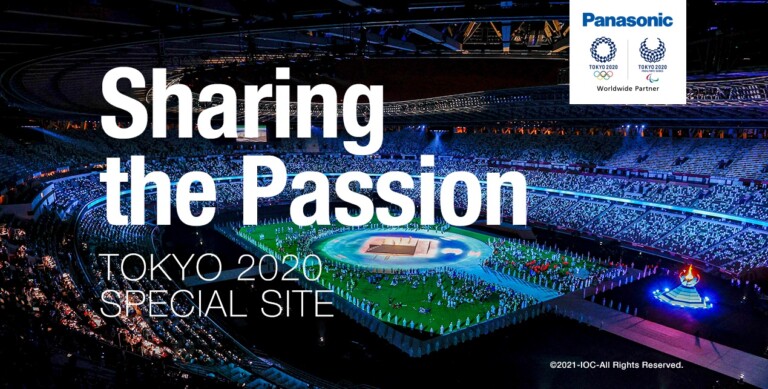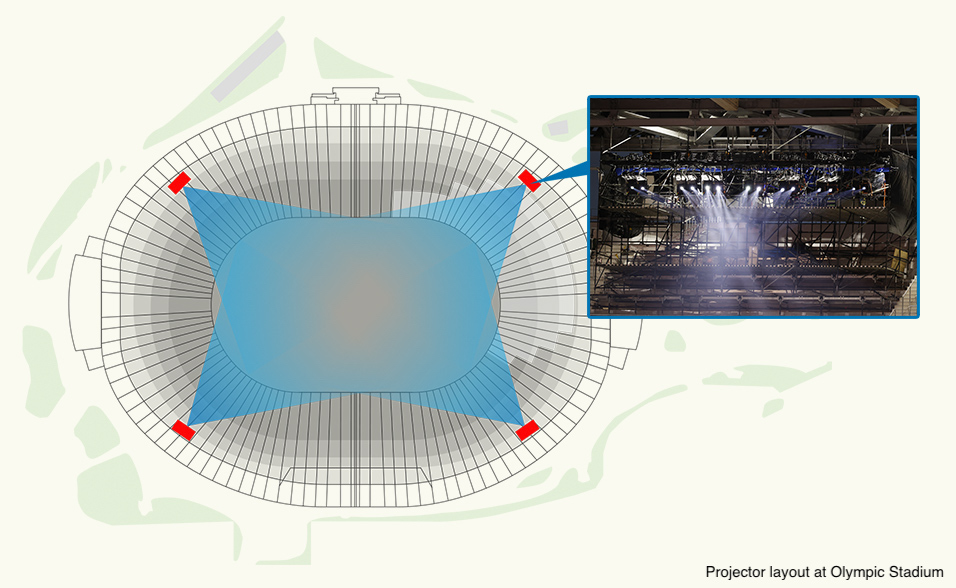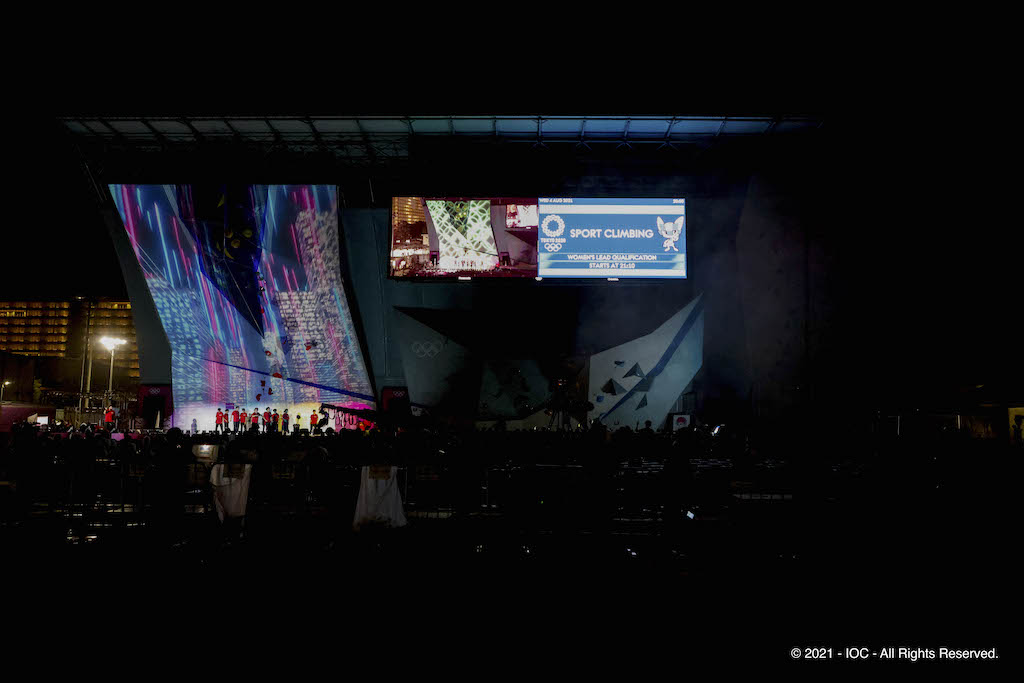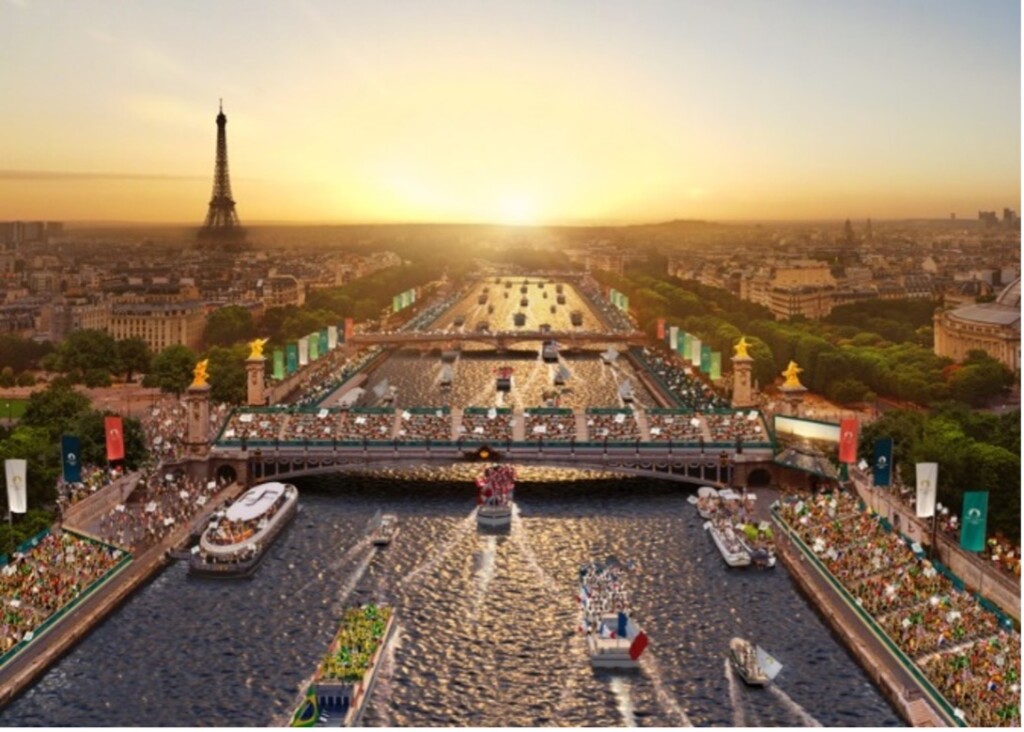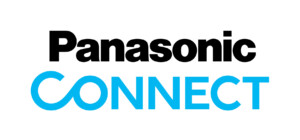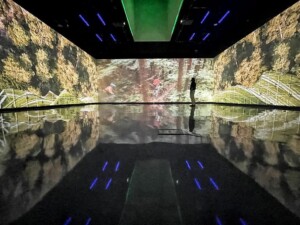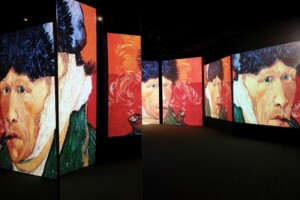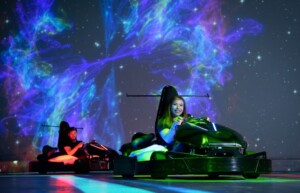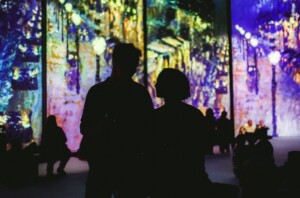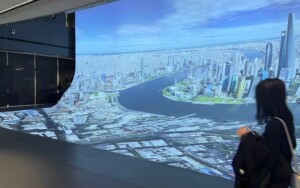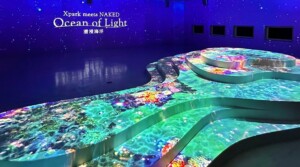by Chad Kunimoto, Panasonic
As explored in Olympic Journey EP1: Before Tokyo 2020, Panasonic is committed to ‘Sharing the Passion’ of athletes with people around the world. We love to connect people who are passionate about sports with the Olympic Games.
As an Official Worldwide Olympic Partner for over three decades, Panasonic has met the stringent demands of professional AV and broadcasting technologies. We have assured flawless operation even in harsh environments. All of the lessons learned and developments we have made along the journey contribute to all other applications. Regardless of their size or challenges.
Every Olympic Games event strives to be more spectacular than the last. Audiences expect to be wowed by the Opening and Closing Ceremonies. They also want to feel like they are part of the stadium crowd with each sport.
Tokyo 2020 started with extensive plans on the drawing board. However, due to the pandemic, there were constant changes. This ended with Tokyo 2020 being delayed by one year. In 2021, it was held in an empty stadium with minimal technicians on the ground.
Nevertheless, it ran successfully for over 30 days under the slogan ‘United by Emotion’.
What Panasonic supplied during Tokyo 2020
Tokyo 2020 made use of a large range of equipment on-site. This ranged from high brightness projectors to large RAMSA line-array speaker systems that delivered clear and crisp sound throughout the venue.

We provided the imaging for broadcast as well as video feeds and displays to provide real-time information to athletes and their teams. Equipment was distributed over more than 50 competition venues. Thanks to our IT/IP platform KAIROS, the majority of the technicians and editors were able to work remotely to deliver high-quality exciting images around the world.
Breaking boundaries with technology
The planning starts long before the Olympic Games themselves. Our engineers work tirelessly behind the scenes to overcome the unique challenges of each event. We equip the venues with the best possible solution/system for a successful event.
For Tokyo 2020 our team identified three key challenges they had to overcome to ensure that everything was in place. We needed to start the Olympic and Paralympic Games with the incredible spectacle of the Opening Ceremony and continue to deliver throughout Tokyo 2020 and the Closing Ceremonies.
The first major obstacle for Tokyo 2020 was the physical constraint of limited space in projection towers since the Tokyo Organising Committee of the Olympic and Paralympic would like to keep the number of audience seats as many as possible.
Our dream team set about completely redesigning the projector while improving performance and capability. This process marked the birth of our RQ50K projector with over 4000 inner parts redesigned and a sleek new frame. We created the only 50klm projector with 4K resolution in an amazingly compact body.
These projectors brought the Opening Ceremony to life with around 60 units needed. This maximized the effect and efficiency while minimizing the installation complexity, cabling, and so on. It also reduced the number of technicians required on the ground.
Technical considerations at Tokyo 2020
The next challenge to tackle was how to balance stability and color intensity. This was incredibly important as red is the major color for Japan. We needed to keep it stable in the harsh environment, where the temperature difference between day and night can be quite extreme in the mid-summer months.
This was a very arduous task for our engineers to overcome with red being a notoriously difficult color to project, especially in extreme temperatures. However, the story was told with an impressive flood of bright ‘Japan red’.
The third issue that the engineers had to manage was the unpredictable weather. With the Olympic stadium being an open-air design, preparing for bad weather was a must. In PyeongChang, we overcame weather considerations by fitting booths around the projector. But as Tokyo often encounters stronger winds, booths were not an option.
In fact, the solution this time was a more basic approach. For example, wrapping each projector with plastic film was a countermeasure against strong wind and rain, but even so, the installation condition did not change.
Bringing the excitement of the sports to homes around the world
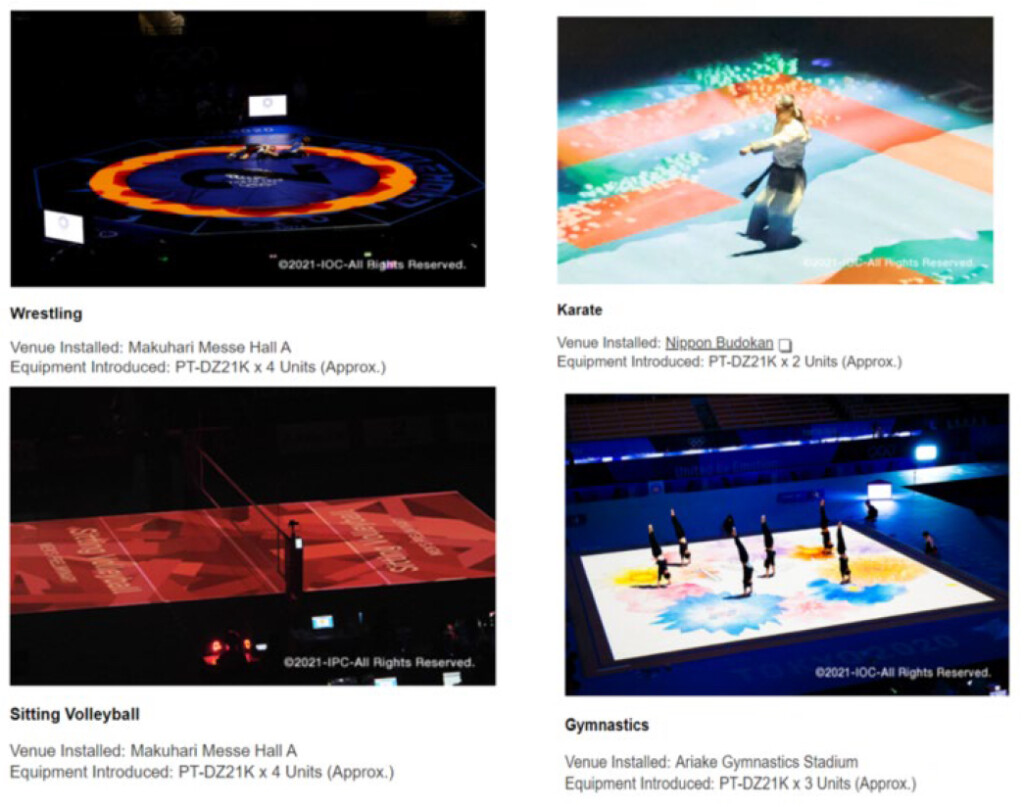
No audience was present in the stadium for Tokyo 2020. So, new cutting-edge technologies were indispensable to keep the audience engaged in the Olympic and Paralympic Games from their homes until the end of each match.
When people watched sporting events, they wanted to get some feeling of normality and switch off from the pandemic in their minds. Seeing an empty stadium was just a reminder, so did not provide the escape the audience wanted.
An empty stadium also creates a big space in broadcasting. Images of the excitement and emotion of the stadium audience are usually a keyspace filler. They also amplify the sensation to the home viewers. With no spectators in the stadium, technology had to bridge the gap and fill in the spaces delivering an enchanting and intense viewing experience.
Projection mapping enhanced the excitement during specific sporting events. This created memorable moments such as the 100m races where the stadium plunged into darkness before the race then the lanes were lit up with the faces, names, and national flags of the athletes. This was a world-first for combining projection mapping with competitive sport.
This was met with great excitement around the world, wowing audiences and the press. The impressive display took the attention and so the lack of stadium audience became unimportant. We created this spectacle by using advanced blended images from around 12 RQ50K projectors into a seamless image.
Memorable moments at Tokyo 2020
Another memorable moment was the Sport Climbing discipline, a new addition to the Olympics at Tokyo 2020. Just before Women’s Lead qualifying, a dynamic light-art display caught everyone by surprise. The climbing wall transformed into a giant screen using our PT-RZ31K 3-Chip DLP Projector.
Break-dancers accompanied by a DJ using RAMSA Line-Array Speakers took to a stage beneath the screen. While there were no live spectators, the sounds of applause and cheers nonetheless filled the venue. A wonderful multi-sensory display is a perfect welcome for a new Olympic sport.
The use of projection mapping during prestigious sporting events was a truly unique and new concept masterminded by the cross-development of esports.
The global esports market is one of the fastest-growing areas with impressive financial growth forecasts. It is an area of great interest but even greater challenges. The key to success is to eliminate lag and allow the competitor and the remote audience to be in sync with each other.
Panasonic’s technical innovation with projectors, displays, pro AV cameras and production solution KAIROS puts us at the forefront of esports solutions. This demonstrates how our technical solutions and developments for specific goals often crossover to deliver broader solutions for other applications.
Panasonic SPORTS CHANGE MAKERS for Paris 2024
Moving on from Tokyo 2020, Panasonic has already begun working on Paris 2024.
For the first time in the history of the Olympic Games, instead of the traditional stadium setting, Paris 2024’s Opening Ceremony will take place along the Seine. This emblematic river flows through the heart of Paris, against the backdrop of one of the world’s most iconic cities.
More than 160 boats will carry delegations down a 6-kilometre route from Pont d’Austerlitz to the Trocadéro. Along the way, they will pass many famous Parisian monuments, bridges, and cultural institutions. For example, Notre Dame Cathedral, the Louvre, and the Eiffel Tower.
There is free public access to part of the river banks, as well as viewing areas on bridges and quays along the route. More than 600,000 spectators will welcome the athletes from across the world for the Parade of Nations.
The step out of the stadium and onto the streets demonstrates a new idea for a traditional event. The goal is to deliver a spectacle that is even more impressive than the last. This drives the momentum of enhancing experiences for guests at the venue sites and creating a life-like experience for home viewers using technology to close the distance and deliver in real-time the sensation of being part of the crowd.
Find out more about how Panasonic is transforming LBE with immersive spaces here.
